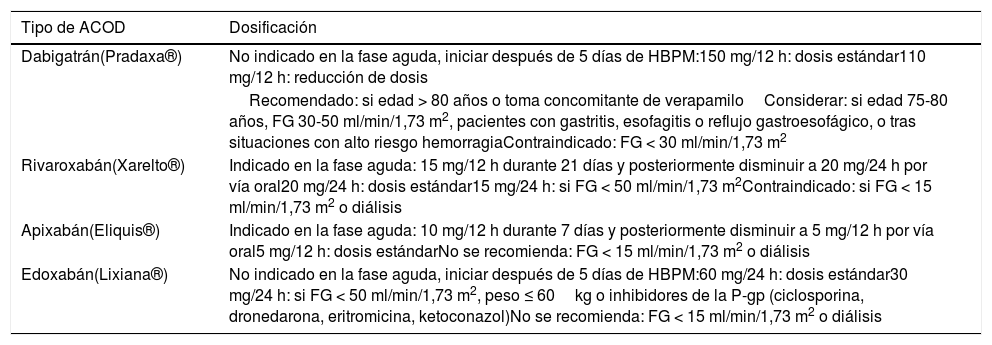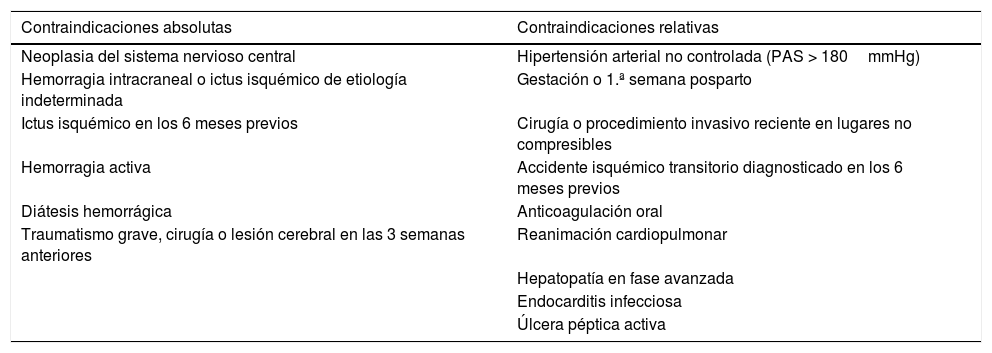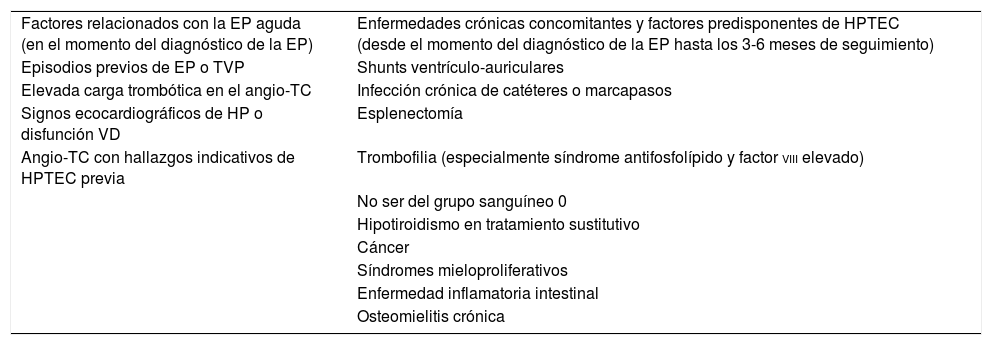
Protocolos para el manejo de la Enfermedad Tromboembólica Venosa
More infoLa correcta estratificación del riesgo de la embolia pulmonar (EP) es esencial para la toma de decisiones, en cuanto al tratamiento y para definir el lugar de ingreso del paciente. En la EP de riesgo alto se requiere un restablecimiento urgente de la circulación pulmonar e ingreso en una unidad de críticos. El tratamiento de reperfusión de elección es la trombólisis sistémica, aunque en determinadas situaciones, sobre todo cuando existe contraindicación para esta, valoraremos realizar una embolectomía quirúrgica o alguna de las terapias guiadas por catéter. En el resto de EP, el tratamiento de elección será la anticoagulación. En la actualidad, los anticoagulantes orales de acción directa han pasado a ser el tratamiento de elección para el tratamiento de la EP, por su mejor perfil de seguridad, aunque las heparinas de bajo peso molecular seguidas de los antivitaminas K siguen siendo el tratamiento más utilizado, por el hecho de estar financiados por el sistema público. En los casos de EP con parada cardiorrespiratoria o shock cardiogénico, siempre que esté disponible en nuestro centro, deberemos considerar la indicación de la extracorporeal membrane oxygenation (ECMO). La reciente creación de los equipos de respuesta multidisciplinar (PERT team) han supuesto una mejoría en la atención de los pacientes con EP de riesgo intermedio-alto y alto. Durante el seguimiento de los pacientes con EP, es imprescindible realizar un correcto cribado de la hipertensión pulmonar tromboembólica crónica, para poder realizar un correcto abordaje diagnóstico y, en el caso que lo precisase, terapéutico.
The correct stratification of pulmonary embolism risk (PE) is essential for decision-making, regarding treatment and defining the patient's place of admission. In high-risk PE, urgent re-establishment of pulmonary circulation and admission to a critical unit is required. The reperfusion treatment of choice is systemic thrombolysis, although in certain situations, especially when there is a contraindication for it, we will evaluate a surgical embolectomy or one of the catheter-guided therapies. In the rest of PE, the treatment of choice will be anticoagulation. Currently, direct oral anticoagulants have become the treatment of choice for the treatment of PE, due to their better safety profile. However, low molecular weight heparins and subsequently antivitamins K, remain the most used treatment, because they are funded by the public system. In cases of PE with cardiorespiratory arrest and / or cardiogenic shock, whenever available at our center, we must consider the indication of extracorporeal membrane oxygenation. The recent creation of PE response teams (PERT team), have meant an improvement in the care of patients with intermediate-high and high risk PE. During the follow-up of patients with PE, it is essential to perform a correct screening of chronic thromboembolic pulmonary hypertension, in order to perform a correct diagnostic and therapeutic approach.
Article
Diríjase desde aquí a la web de la >>>FESEMI<<< e inicie sesión mediante el formulario que se encuentra en la barra superior, pulsando sobre el candado.

Una vez autentificado, en la misma web de FESEMI, en el menú superior, elija la opción deseada.

>>>FESEMI<<<











